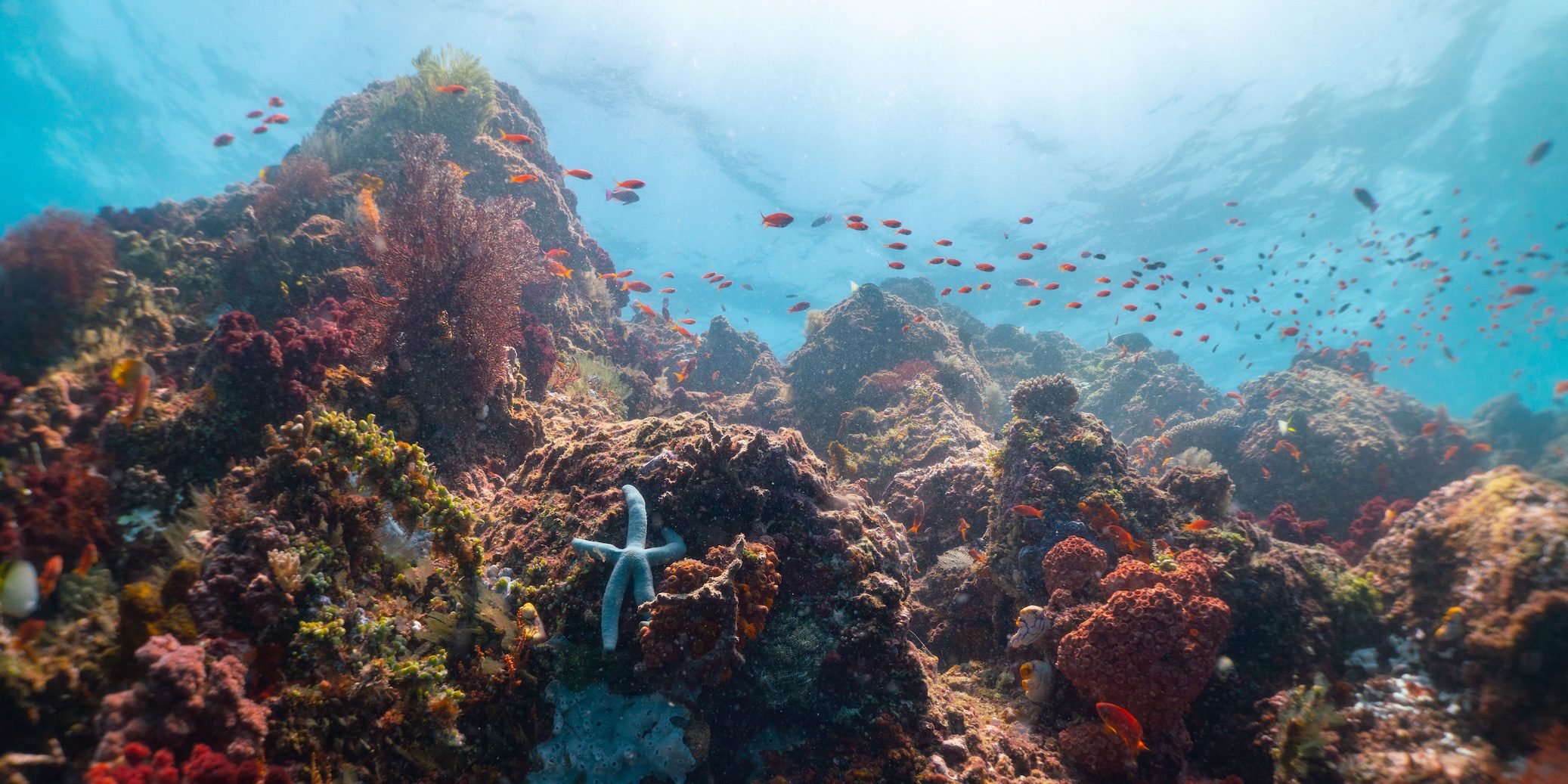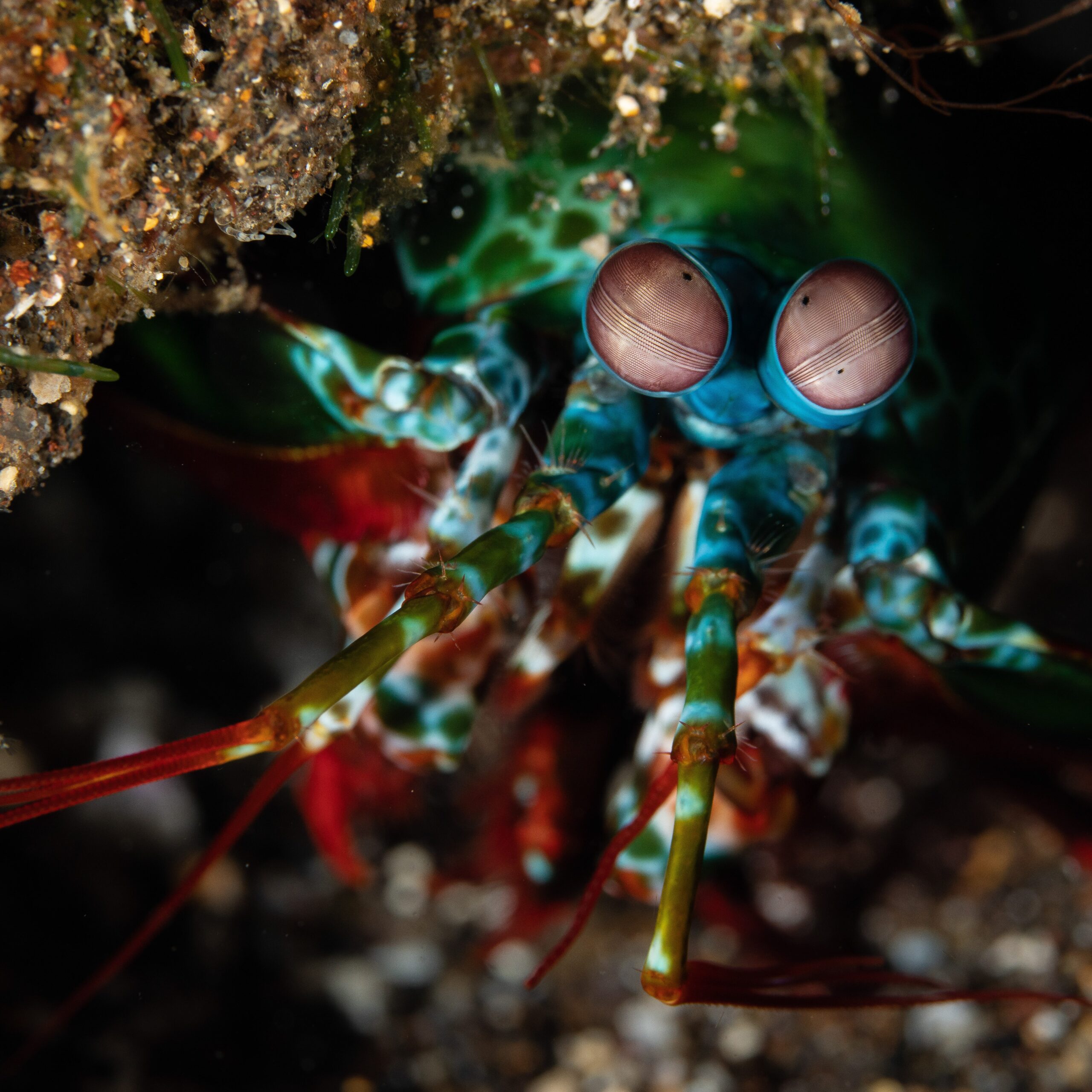
Common Critters of Manado Bay
For divers who are looking to explore new muck diving sites with few other divers (if any) in the water and the chance to really hunt for critters, Manado Bay is rapidly gaining recognition as a critter hotspot that is rich in rare and unusual marine life. Here are some of our favorites that we encounter during our afternoon easy-going dives around the Manado Bay region which starts with our House Reef – just a step off the beach! In fact, most of our most productive dive sites are within a 15-minute boat ride of the resort which makes for relaxing diving after lunch and provides a complete contrast to the world-famous coral reefs and walls of the Bunaken Marine Park which we explore in the mornings.
Thorny / Common Seahorses
At some of our seagrass sites, we can have multiple seahorse sightings in a single dive. The thorny, pictured above, (and common) seahorses, use the seagrass for camouflage and can often be found moving from blade to blade as they hunt for food and ideal spots to hide out.
Banded Sea Snakes
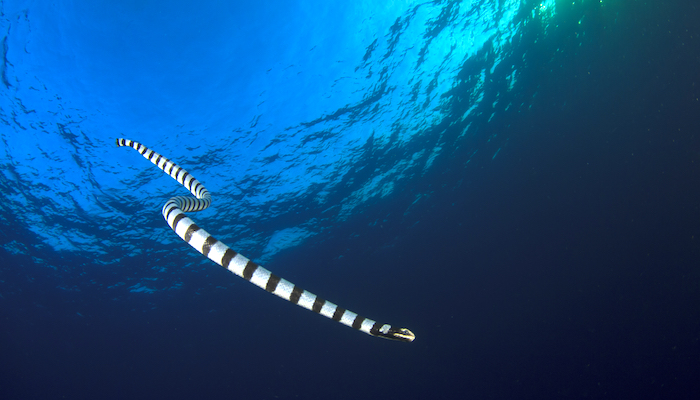
Banded Sea Snake after surfacing for air
One of the best dive sites for spotting juvenile banded sea snakes is our House Reef! The juveniles use the shallows as nursery areas and the shallow water corals provide excellent hunting grounds until they mature enough to venture into deeper waters.
Mimic Octopus
Always a highlight and always intriguing to watch. The mimic octopus entertains divers as it transitions from a flounder-like flat body shape to a more intricate and decorative lionfish pose. The most common sightings are on our sand sights where they burrow into the sand.
Peacock Mantis Shrimp
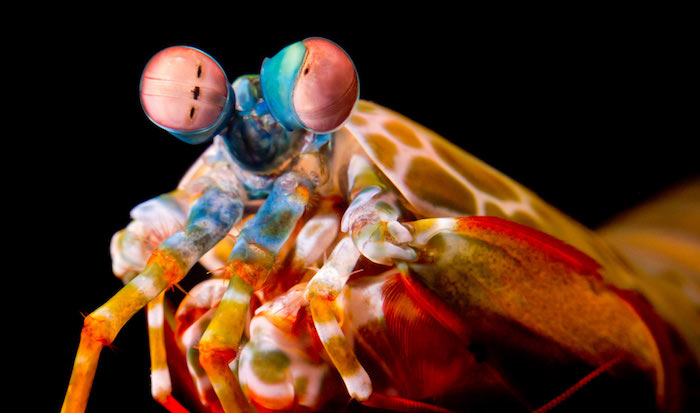
The peacock mantis shrimp is a “smasher” species of mantis shrimp
Often spotted under table corals and rock formations, look out for females carrying clutches of eggs. Mantis shrimp are easily startled so if you are hoping to take underwater images, approach slowly until it becomes settled with you being in its space.
Stingrays
We often see two species of spotted sting ray in Manado Bay, both the smaller and more diamond shaped Kuhl’s stingray (Neotrygon kuhlii) and the rounder, and usually larger and more colorful blue spotted ribbontail ray (Taeniura lymma). Both species are seen swimming over the sand or hidden, stationary just under the surface of the sand or rock and coral formations.
Spotted Guard Crabs
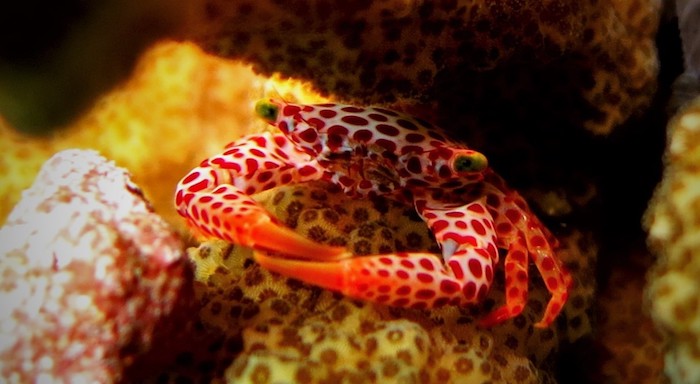
Photo: Sarah Wormald. Spotted guard crabs are found nestled inside branching corals.
Not always so easy to spot unless you know where to look. Spotted guard crabs tend to inhabit branching corals and are found deep inside the corals making them extremely difficult to take images of – but their colors make them worth the effort!
Hairy Squat Lobsters
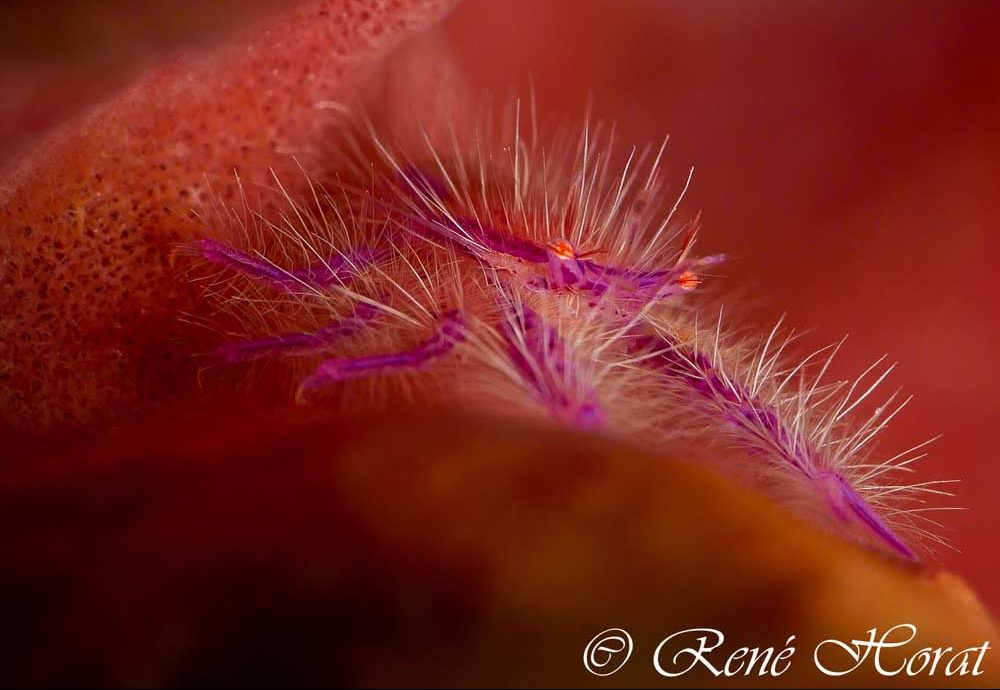
Hairy Squat Lobster (Lauriea siagiani) live on barrels
If you happen to swim by a barrel sponge while diving in Manado Bay, look carefully between the raised vertical lines which run down the outsides of the barrel. In the indentations it’s often possible to spot the brightly colored hairy squat lobster which, if you can light them correctly, are extremely photogenic.
Ribbon Eels
Did you know that juvenile ribbon eels are black and are not yet gender specific? As the eel ages, it develops a bright blue color with a vivid yellow stripe and become male; later it will change to female and become completely yellow!
Spanish Dancers
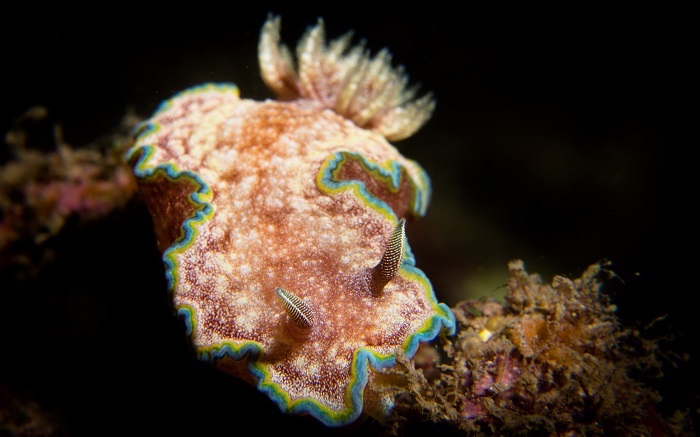
Glossodoris are just one species from a plethora of nudibranchs which we see in Manado Bay
Most often spotted on our Murex Manado House Reef during night dives, these are a firm favorite of many divers. The Spanish Dancer is a dorid nudibranch and its scientific name, scientific name Hexabranchus sanguineus, literally translates to “blood-colored six-gills”.
Nudibranch
The Glossodoris plumbea (pictured here) is just one of a plethora of nudibranch which we find at all Manado Bay dive sites – our House Reef being one of the best sites for a variety of sightings.
Bigfin Reef Squid
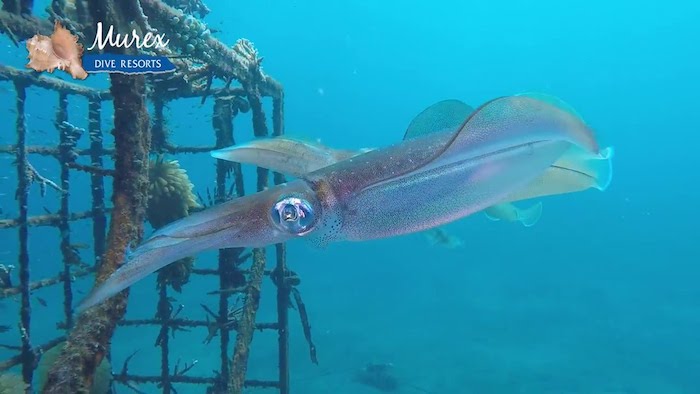
Photo: Pim Van Schendel. Bigfin reef squid look for objects on which to lay their eggs
Often found close to the surface and especially near mooring lines, on which they often lay their eggs, the bigfin reef squid make stunning day and night dive photography subjects. They are often spotted in small schools so if you see one, look around for the others!
Of course, we cannot possibly list all of the species found at our Manado Bay sites and this is just a brief overview of some of the most common. Every dive in Manado Bay delivers different sightings throughout the year and rarely disappoints! To find out more and to come and see for yourself, contact us on reservations@MurexDive.com
Why not enhance your time in Indonesia and visit another two phenomenal North Sulawesi diving destinations? Discover three of North Sulawesi’s most notable diving areas in one incredible trip: Bunaken (including Manado Bay) -> Bangka -> Lembeh. Discover epic walls and wide angle in the Bunaken Marine Park, kaleidoscopic reefs surrounding Bangka Island and the world’s most famous muck diving and Luxury Resort in the Lembeh Strait. With seamless boat diving transfers from resort to resort there’s no wasted transfer days and no gear drying or packing – just dive your way around North Sulawesi!




